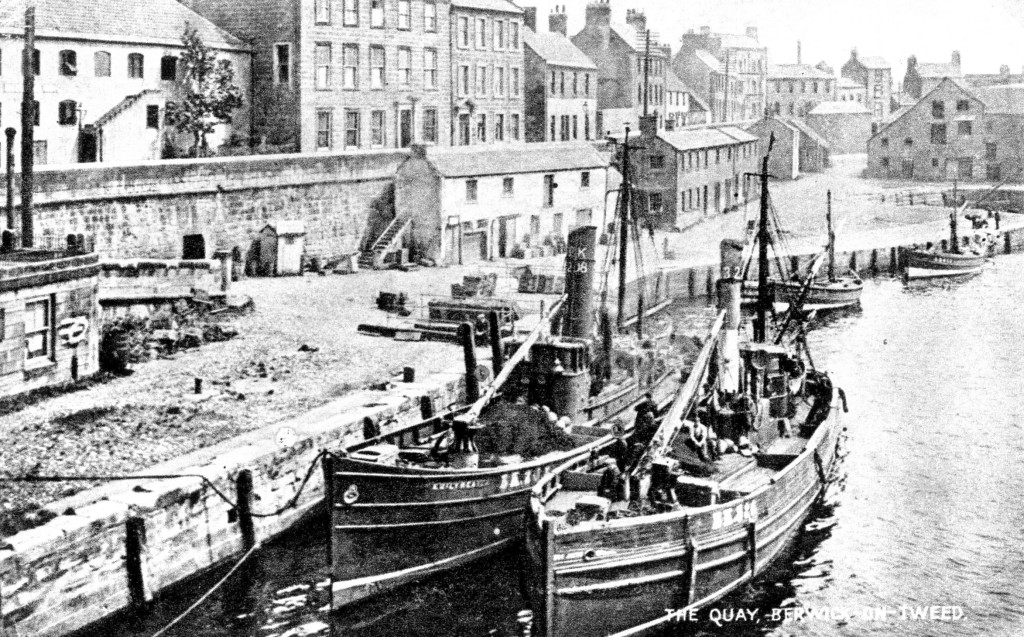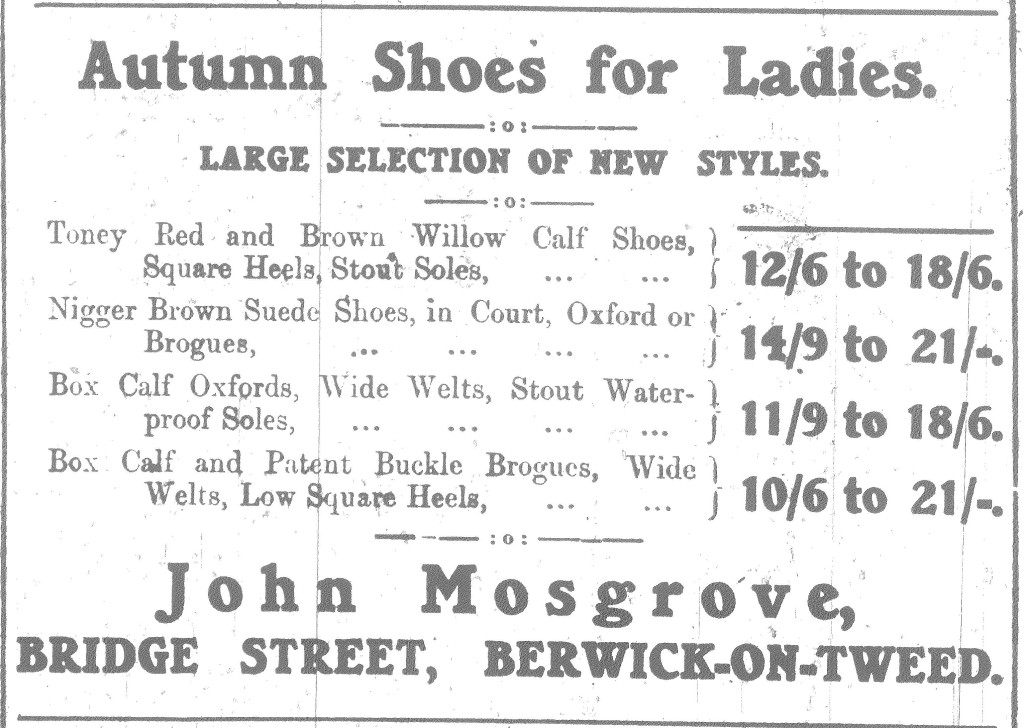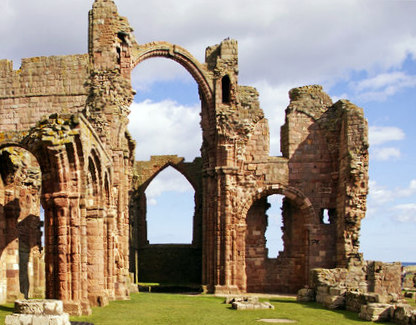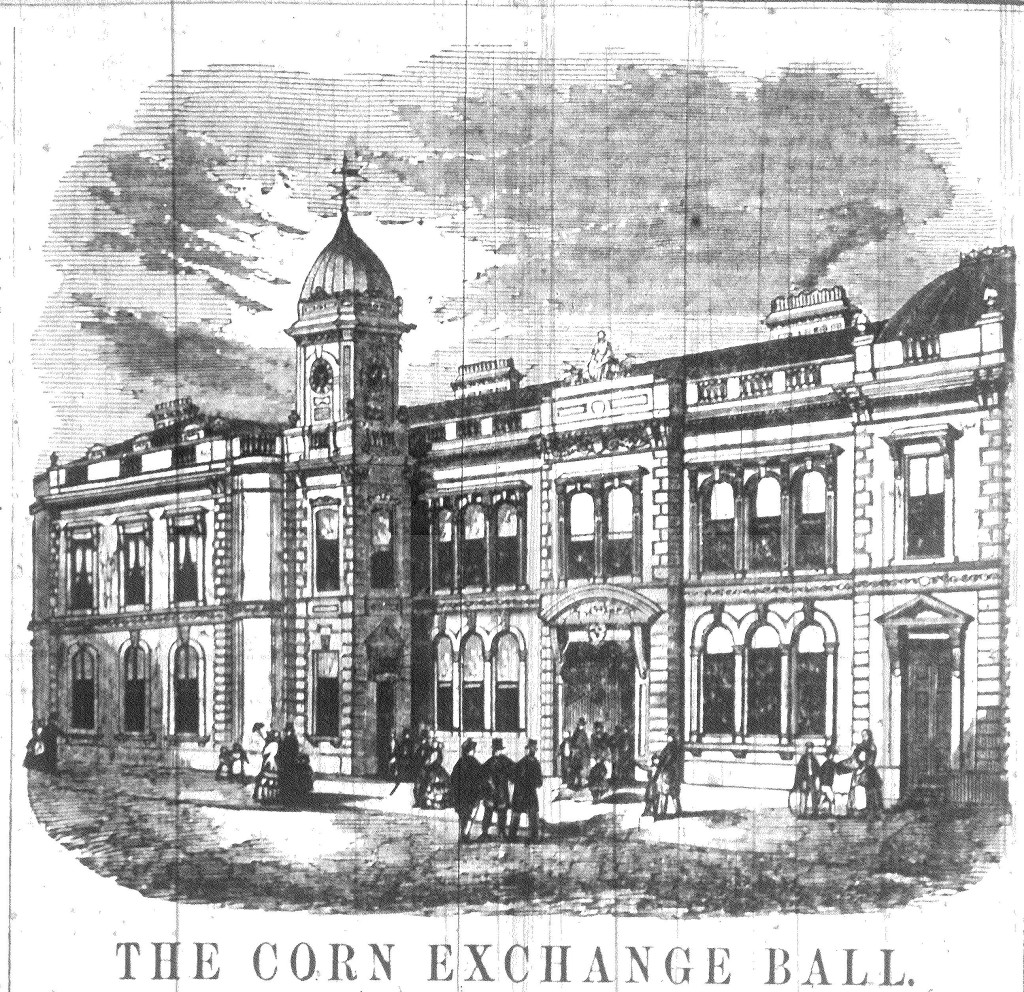BERWICK ADVERTISER, 17 SEPTEMBER 1915
BOY DROWNED AT BERWICK QUAY
Shortly after noon on Monday, George Grieve, 13 years of age, son of James Grieve, baker, 1 Palace Street, Berwick, was discovered in the Tweed near the Leith Dock, and is supposed to have taken a fit, to which he was subject, and fallen from the Quay into the water. Thos. Laidler and James Burgon, who were salmon fishing close by, went to the spot with a boat and lifted Grieve from the water. He was conveyed to the Fish House, where artificial respiration was tried for some time, but on the arrival of Dr Taylor, who examined the boy, life was found to be extinct. The body was taken home on the Police ambulance
The Inquest
Coroner Weatherhead and a jury held an inquest on the body in the Town Hall on Tuesday afternoon.
James Grieve, baker, identified the body as that of his son, George, aged 13. His son was subject to fits, and took them frequently.

William McPhee, private of the 210th Royal Scots, said he was on sentry duty on the Quay guarding the transport waggons for the Royal Scots. He knew the deceased and had taken him away twice from the edge of the Quay on Saturday. Shortly after twelve on Monday he saw deceased standing behind one of the transport waggons. He turned to go to the other end of his beat, and on looking round he saw some boys running and one of the boys informed him that there was a boy in the water. He turned out the remainder of the guard, and on going to the spot he saw deceased in the water. By that time a boat was a few yards from deceased, which had come from the other side of the river. The body was lifted into the boat. He heard no shout from the deceased nor did he see deceased fall over.
Thomas Laidler, salmon fisher, West End, Tweedmouth, said he was fishing at the other side of the river where the deceased fell in. He heard some boys shouting for help, and he rowed a boat over with John Burgon and saw deceased lying under water on the bed of the river. He got off the boat and lifted the deceased into the boat. The water was about three and a half feet deep. He conveyed deceased to the Salmon Stairs.
By a juror- I never heard the splash or saw deceased come to surface. It took me two minutes to row across.
Dr J. Cleasby Taylor stated that he was called to the Fish House, where he examined him. Life was then extinct. Deceased was frothing considerably at the mouth and nose, and it appeared as if deceased had had a fit and been unable to extricate himself. The cause of death was drowning.
The jury returned a verdict in accordance with the medical testimony.
MOTOR ACCIDENT NEAR BERWICK
The first serious accident since the lighting restrictions came into effect at Berwick occurred on Tuesday night, two men being injured by being knocked down by a motor car. The accident took place in the dark near to Castlehills Lodge, on the Canty’s road. A motor car belonging to Mr Wm. Askew, of Ladykirk, was returning from Castlehills to Ladykirk, when it overtook and knocked down three harvest labourers. Two of the men, named Arthur Jackson and Edward O’Neil, were bruised, one of them somewhat badly. The car was proceeding at a very slow pace. The men were conveyed in the motor car to Berwick Infirmary, where they were detained. It was found that no bones were broken, and one of the men had escaped uninjured, while the other two were bruised.

DEATH OF MR JOHN ROBERTSON
We regret to record the death of Mr John Robertson, for many years senior traveller with the firm of Messrs Redpath and Son, draper, etc., Berwick. Outside of business Jack Robertson, as he was familiarly called, was best known in cycling circles. He was the founder of the Tweedside Cycling Club in 1893, was its first secretary, and at the time of his death held the office of president. He was a member of the recently formed Berwick Athletic Society, and served on the committee. Mr Robertson has been in failing health for some time, and passed away at his residence 1 West End, Tweedmouth, on Wednesday. Much sympathy will be expressed for his widow and family. His eldest son is serving with the 7th Northumberland Fusiliers somewhere in France. The funeral takes place on Sunday at Tweedmouth Cemetery.

Leon Georget was known as The Father of the Bol d’Or, having won the race nine times between 1903 and 1919 in Paris. He also won the Bordeaux to Paris in 1903 and 1910. This image originally formed part of the George Grantham Bain collection which is now in the procession of United States Library of Congress‘s Prints and Photographs division under the digital ID ggbain.04379.




